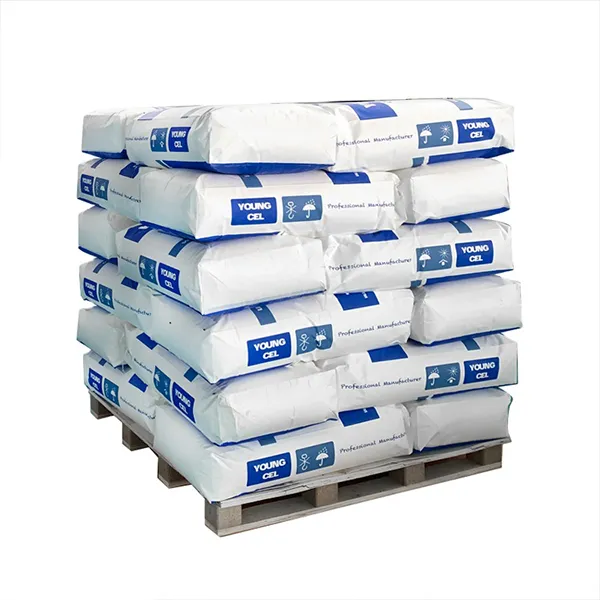Understanding Redispersible Polymer Powder (RDP) A Key Component in Modern Construction Materials
Redispersible polymer powder (RDP) is becoming increasingly crucial in the field of construction and building materials. This innovative material offers several advantages that enhance the performance and durability of various construction products, including adhesives, grout, and dry-mixed mortars. In this article, we will explore what RDP is, how it works, and its various applications in the construction industry.
What is Redispersible Polymer Powder?
Redispersible polymer powder is a dry powder that, when mixed with water, can be reconstituted into a polymer dispersion. This means that the powder, upon contact with water, can form a film that provides flexibility and adhesion to the mix. RDP is typically made from various types of polymers, including ethylene-vinyl acetate (EVA), styrene-acrylic, and vinyl acetate, allowing manufacturers to tailor the properties of the final product to meet specific needs.
How Does RDP Work?
The magic of RDP lies in its ability to modify the performance characteristics of construction materials. When mixed into cement-based formulations, RDP enhances the workability, water resistance, adhesion, and flexibility of the mortar or adhesive. The re-dispersible nature of the powder ensures that it can easily integrate into the mixture, leading to improved performance without compromising the integrity of the material.
Benefits of RDP in Construction
1. Improved Adhesion One of the key benefits of RDP is its ability to provide strong adhesion to various substrates. This is particularly important in tile adhesives and wall and floor coverings, where a strong bond is crucial for durability.
2. Enhanced Flexibility RDP helps create a flexible film within the mortar or adhesive, allowing it to withstand movements and stresses without cracking. This is especially beneficial in environments with temperature fluctuations and structural movements.
redispersible polymer powder vaerdp

3. Water Resistance The incorporation of RDP improves the water resistance of the end product. This characteristic is vital for applications that are exposed to moisture, such as external wall coatings and swimming pool tiles.
4. Ease of Application Products containing RDP are easier to apply and work with. The improved workability means that they can be spread more smoothly, allowing for professional finishes even for less experienced applicators.
5. Sustainability RDP formulations can often enhance the durability of construction materials, leading to longer-lasting products. This can contribute to sustainability efforts by reducing the frequency of repairs and maintenance.
Applications of RDP in Construction
RDP finds numerous applications across various construction materials. These include
- Tile Adhesives RDP enhances adhesion and flexibility, allowing tiles to be applied in a wider range of conditions. - Cement-Based Mortars RDP is used to improve the performance of mortar for bricklaying and plastering. - Self-Leveling Compounds The use of RDP ensures a smoother finish and better adhesion in self-leveling underlayments. - Thin-Set Mortars RDP contributes to better water retention and adhesion in thin-set applications, providing an optimal setting environment for tiles.
Conclusion
Redispersible polymer powder is a versatile and valuable component in modern construction materials. By enhancing adhesion, flexibility, and water resistance, RDP not only improves application performance but also contributes to the durability and sustainability of construction projects. As the construction industry continues to evolve, the inclusion of advanced materials like RDP will play a key role in the development of more effective, long-lasting building solutions. Thus, understanding and utilizing RDP can lead to significant advancements in the quality and reliability of construction products.
-
Rdp Powder: Key Considerations for Wholesalers in the Building Materials IndustryNewsJul.08,2025
-
Key Considerations for Wholesalers: Navigating the World of Hpmc - Based ProductsNewsJul.08,2025
-
Hpmc Detergent: Key Considerations for WholesalersNewsJul.08,2025
-
Key Considerations for Wholesalers: China Hpmc For Tile Adhesive, Coating Additives, Concrete Additives, and MoreNewsJul.08,2025
-
Crucial Considerations for Wholesalers: Navigating the World of Construction MaterialsNewsJul.08,2025
-
Key Considerations for Wholesalers Sourcing Additive For Cement, Additive For Concrete, Additive For Putty from Additive Manufacturer Shijiazhuang Gaocheng District Yongfeng Cellulose Co., Ltd.NewsJul.08,2025




